

Ireland is an island in the North Atlantic divided between the Republic of Ireland, which covers a substantial part of the area. At the same time, Northern Ireland is a part of the United Kingdom.
Although the island has two jurisdictions and two different currencies, there is increased commercial activity due to government policies and the growing tourism sector. Ireland has a growing energy sector, and wind farms have come up in many places.
Given its location, Ireland is involved in maritime trade with European and Scandinavian countries. It has over 45 ports and harbours that handle most of its trade with the outside world. Ireland also has numerous marinas and pleasure ports since it is a famous vacation spot.
Let us look at the seven major ports of Ireland.
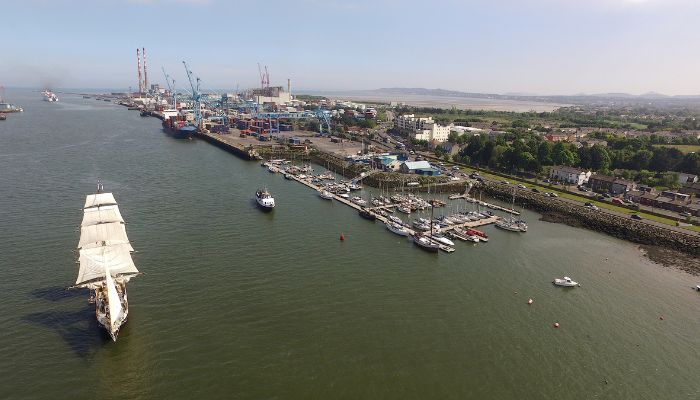

Dublin port lies at the mouth of the Liffey River, in Dublin Bay on the eastern coast of Ireland. The harbour’s geographical location in the heart of Dublin city and the depth of its waters have made it the biggest port in the country, as it handles around 50% of all maritime traffic. It has become a famous tourist destination and the main centre of commerce, finance and culture.
Brewing was a primary historic industry; however, many new sectors like pharmaceuticals, Information and technology have emerged. In fact, many IT firms like Microsoft, Google, Amazon and Yahoo have established their European headquarters in Dublin, contributing to infrastructural growth in the city.
Dublin dates back to the first century BC when it was known as ‘Dubh Linn’. The famous astronomer Ptolemy also wrote about it. However, the present city was founded by the Vikings in 841 AD. It served as a military and judicial base after the Normans invaded Ireland. From the 14th to 16th centuries, it came under the control of the English.
The Dublin port deals with approximately 7500 ships, 28,120,000 tonnes of cargo, 700,000 TEUs and 1,900,000 passengers annually. In the first half of 2022, the port handled 18.6 million tonnes of cargo and 3964 cargo vessels. Dublin port recorded a ten per cent increase in cargo volume compared to 2021.
It has facilities for handling RORO, trailers, containers, break bulk, dry and liquid bulk and general cargo. Six ferry companies operate 17 services to the United Kingdom.
Principal exports comprise ores, agricultural goods, packaged items, peat moss, industrial products and whiskey. The port receives fuel oil, grains and cereals, machines, coal, chemicals, fertilisers, animal feed, lead, zinc, steel, paper and iron.
The oil terminal covers 41 hectares, capable of storing 330,000 tonnes. It has four berths handling oil, molasses, bitumen, LPG etc. It has silos for storing 100,000 tonnes of grain, cereals and feed.
Large cruise ships berth at Alexandra Quay, while smaller ones can arrive at the city centre upstream of Liffey River.
Galway is the only city in the province of Connacht. The port is situated on the western coast of Ireland, on the sheltered corner of Galway Bay. It dates back to the 10th century and is crucial for the economic and industrial development of the city.
Currently, the port occupies 32 acres of area in the inner docklands of the city. The numerous facilities are leased to companies operating in the port area.
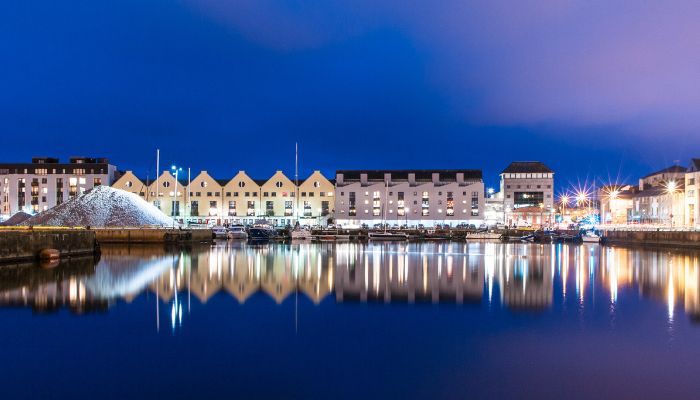

The port has nine berths with a total quay length of 1189 m and 40 marina berths. The harbour company manages two warehouses covering 8000 m2 and a 10-acre open yard provided for rent at the Port Enterprise Park. The central quay has a 1330 m2 store area for logs, timber, limes etc.
Presently, the port is visited by over 300 ships carrying around 1,000,000 tonnes of cargo annually.
Major exports include scrap metal and limestone, while imports are petroleum goods, bitumen, fish, coal lignite, chemicals and steel.
It is located on the Shannon river on the southwestern coast of Ireland. Major imports comprise fertilisers, timber, fuel, oil, and conventional cargo, while exports include meat and bulk sugar.
Approximately 300 ships and 7,600,000 tonnes of cargo are handled annually. It has six berths: the Limerick Dock, Shannon Airport Jetty, Aughinish Marine Terminal, Foynes, Tarbert Island Jetty and Moneypoint Marine Terminal. It can handle ships 180,000 DWT ships, container carriers and oil tankers.
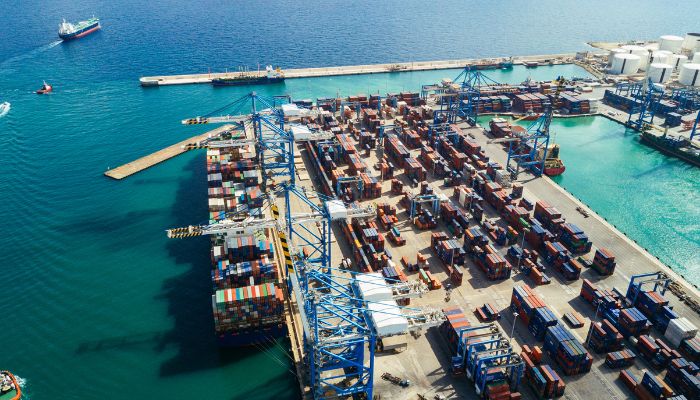

The Shannon Jetty is utilised by vessels weighing up to 6500 DWT for importing jet fuel to the airport. Aughinish jetty is close to an alumina plant and handles bauxite vessels weighing up to 75000 DWT with a draught of 12.5 m.
Tankers weighing 40,000 DWT with a 180 m LOA use the inside berth. The Tarbett Jetty serves the power station for importing HFO. About 250,000 DWT vessels are handled at the Moneypoint jetty, which serves the fire station powered by coal.
Foynes is sheltered and has two deepwater jetties for dry and bulk cargo vessels. There is an additional oil berth for 10,000 DWT tankers.
The port has enough storage facilities, a 3800 m2 warehouse, and an open storage yard. The Doyle Shipping Group provides 18,500 m2 of warehousing space and four hectares of yard storage.
Bantry Bay is the biggest among the marine inlets on the southwestern coast of Ireland. It spans 35 kilometres, with the bay’s entrance being 10 kilometres wide, narrowing to 3 km near its head. Close to CastletownBere is Bere island on the northern shore and Whiddy Island on the southern coast, the two biggest islands in the bay.
The port has an SPM and four anchorages for accommodating oil tankers as oil is transhipped from the Whiddy Island oil terminal. Most vessels berth inside the inshore waters except oil tanker ships.
Other essential export commodities include seafood and stone. Approximately 1,000,000 tonnes of cargo is handed at the port annually.
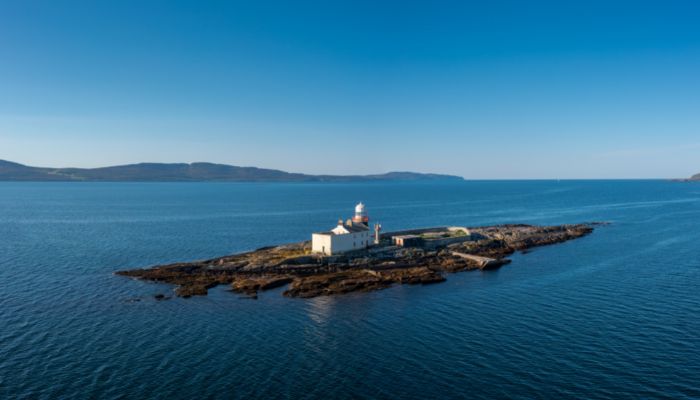

Besides serving as a major transhipment port, it also serves cruise ships and offers marine leisure activities in its harbour marine. People can rent pleasure crafts and explore the nearby islands or book several exciting tours offered by different touring companies.
The port is important for the regional economy and has many great beaches where people can enjoy surfing. Fishing is a crucial industry for locals, and species like herring, whitefish, salmon, lobsters and crabs are abundant.
Mussels are also harvested, and the region boasts the country’s largest concentration of rope-mussel culture and several fish farms.
The Port of Cork is situated on the River Lee, just 15 nautical miles from the sea. It is a major seaport on the southern shores of Ireland and has facilities distributed at four locations in its natural deepwater harbour.
The port handles RORO, LOLO, Bulk carriers, and cruise ships and also offers pilotage services. Many warehouses and storage spaces are also available for lease.
Approximately 2270 ships, 8,900,000 tonnes of cargo, 147 550 TEUs and 53 cruise ships carrying 100,000 people are handled at the port annually. Fully loaded Panamax ships arrive at Ringaskiddy, the country’s only Freeport.
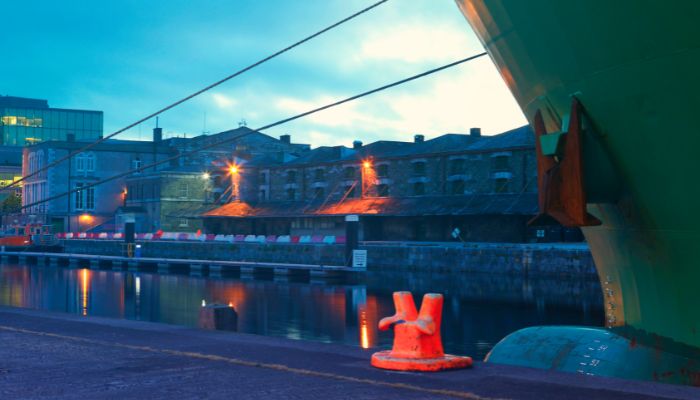

Cork has witnessed growing cargo traffic over the years due to its strategic geographical location and well-sheltered harbour area. The port is close to the major shipping routes to North Europe and has decent cargo handling equipment and capacity. It is well-linked with the interiors of Ireland through roads and railways, allowing the swift distribution of cargo.
The port has four operational areas that handle different cargo types and vessels. The city quays accommodate bulk and breakbulk carriers, and the Tivoli harbour and Ringaskiddy harbour welcomes only RORO and LOLO, while Cobh harbour is meant for cruise ships.
The port exports dairy products like milk powder and butter, fertilisers, ammonia, urea, wood chips, livestock and refined and unrefined petroleum products. Imports include grains, animal feed, perishable items like fruits, molasses, automobiles, cement, coal, steel sheets, logs, manganese and its ore, acids, chemicals etc.
Drogheda is a key multimodal port on River Boyne, just 4.5 nautical miles from the sea. It lies in an industrial region on the eastern coast of Ireland and is also close to Dublin. The local economy is gradually changing as traditional worlds like textiles, shipping, and breweries are declining while employment in services and telecommunications is increasing.
An added advantage of the port is the direct motorway link to Ireland’s industrial and commercial areas. Its location on the east coast makes it the perfect port to conduct trade with Europe, Baltic Sea Nations and Scandinavian countries.
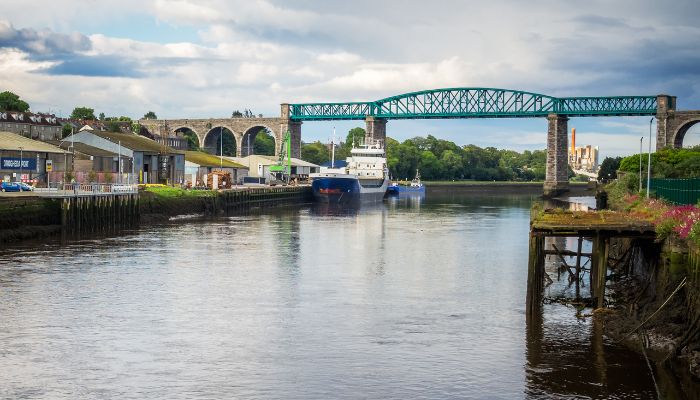

The port has facilities for general cargo, containers, paper, timber, LPG, steel, grains, fertilisers, petroleum, etc. About 550 ships, 1,050,000 tonnes of cargo and 15,400 TEU are handled annually.
Drogheda has inner northern quays with four berths covering 430 m, a terminal and a container handling facility that also processes paper and timber. Tom Roes point terminal spans 160 metres and has a depth of 6 m. It has 5.8 hectares of open storage area and an 8000 m2 warehouse for keeping paper.
The hydrocarbon facility accommodates 80 m long vessels while the oil terminal can deal with 10,000 m3 of oil and 1,500 m3 of LPG. A private facility with a 150 m long berth handed construction materials like cement, stone and magnesite.
Situated on the southeastern end of Ireland, Waterford port is a deep natural harbour on the Suir River, just 14 nautical miles from the sea.
It has berthing areas on the northern banks of the river, while the container terminal is located at Belview, around three nautical miles from the main port. Anchorage for passenger vessels and cruises is offered at Dunmore East, which also provides storage areas for several cargo types.
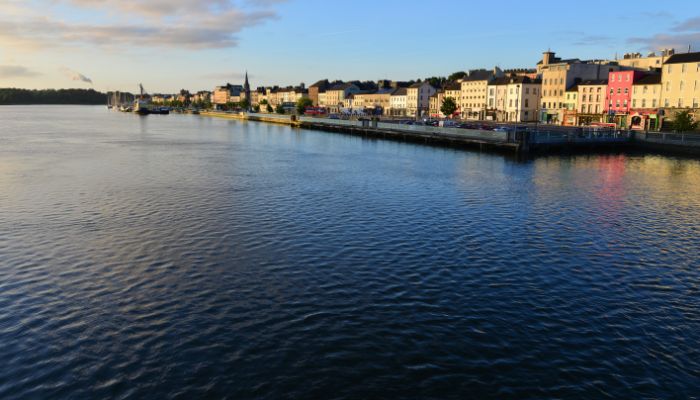

The port exports agro-based products, manufactured items and packaged food. It imports cereals, grains, fertilisers, steel, paper, logs etc. In the past few years, imports have increased and diversified as packed meat, limestone, fruits and peat moss are also handled here. Around 820 ships, 2,600,000 tonnes of cargo, 186,100 TEU and 20,000 passengers are handled annually.
Also, Waterford port is the nearest Irish port to Europe and has major trade connections with European nations. It also handles renewables and gas for the offshore oil ad gas sector. The port operates another terminal for accommodating cruise ships.
You might also like to read-
Disclaimer: The authors’ views expressed in this article do not necessarily reflect the views of The Marine Learners. Data and charts, if used, in the article have been sourced from available information and have not been authenticated by any statutory authority. The author and The Marine Learners do not claim it to be accurate nor accept any responsibility for the same. The views constitute only the opinions and do not constitute any guidelines or recommendations on any course of action to be followed by the reader.
The article or images cannot be reproduced, copied, shared, or used in any form without the permission of the author and The Marine Learners.










We believe that knowledge is power, and we’re committed to empowering our readers with the information and resources they need to succeed in the merchant navy industry.
Whether you’re looking for advice on career planning, news and analysis, or just want to connect with other aspiring merchant navy applicants, The Marine Learners is the place to be.